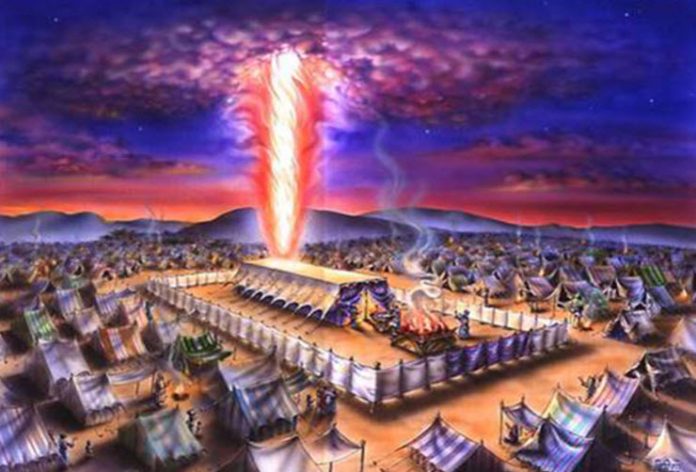Parshat Terumah details the construction of the Mishkan, a portable sanctuary that the Jews built in the wilderness as a dwelling place for Hashem. The Mishkan was not just a functional structure, but a sacred space that symbolized the Jews’ connection to Hashem and their commitment to serving Him. This week’s portion teaches us about the importance of creating sacred spaces in our own lives.
The instructions for building the Mishkan were very precise and detailed, with every measurement and material specified by Hashem. The Mishkan was to be constructed of acacia wood, covered in gold, and adorned with precious stones and fine fabrics. It was to be divided into different sections, each with its own purpose and significance.
The Ark of the Covenant was to be placed in the innermost chamber, the Holy of Holies. This was the most sacred space in the Mishkan, where Hashem’s presence would dwell. The Ark was made of acacia wood, covered in gold, and contained the tablets of the Ten Commandments.
The outer chamber, the Holy Place, was to contain the table for the showbread, the menorah, and the incense altar. These items were used in the daily service of the Mishkan, and each had its own spiritual significance.
The Mishkan was not just a functional structure, but a place of great spiritual significance. The meticulous attention to detail in its construction was a reflection of the Jews’ commitment to serving Hashem and creating a sacred space for His presence to dwell.
Today, we can also create sacred spaces in our own lives. These spaces can be physical, like a synagogue or a meditation room, or they can be more abstract, like a daily prayer or meditation practice. The key is to create a space that is dedicated to connecting with Hashem and elevating our spiritual selves.
Creating a sacred space can also be a way to cultivate mindfulness and intentionality in our daily lives. By setting aside a specific time and place for prayer or meditation, we can bring more focus and presence to our spiritual practice.
In addition to creating sacred spaces, Parshat Terumah also teaches us about the importance of giving to support the work of Hashem. The Mishkan was built through the generous contributions of the Jewish people, who gave of their time, resources, and skills to create a place where Hashem’s presence could dwell.
Today, we can also give to support the work of our synagogues, schools, and other Jewish organizations. By giving tzedakah (charity), we can help ensure that these institutions have the resources they need to continue their important work.
Parshat Terumah also teaches us about the importance of community in creating a sacred space. The Mishkan was built through the efforts of the entire Jewish community, each contributing their own unique skills and talents. The Mishkan was not just a structure, but a symbol of the Jewish people’s unity and commitment to serving Hashem together.
Today, we can also work to create sacred spaces within our communities. By coming together in prayer, study, and other activities, we can create a sense of unity and shared purpose. This sense of community can help us feel more connected to Hashem and to each other.
In conclusion, Parshat Terumah teaches us about the importance of creating sacred spaces in our lives. Whether physical or abstract, these spaces can help us connect with Hashem and elevate our spiritual selves. By giving to support the work of Hashem, working together as a community, and cultivating mindfulness and intentionality in our daily lives, we can create spaces that are truly sacred.












